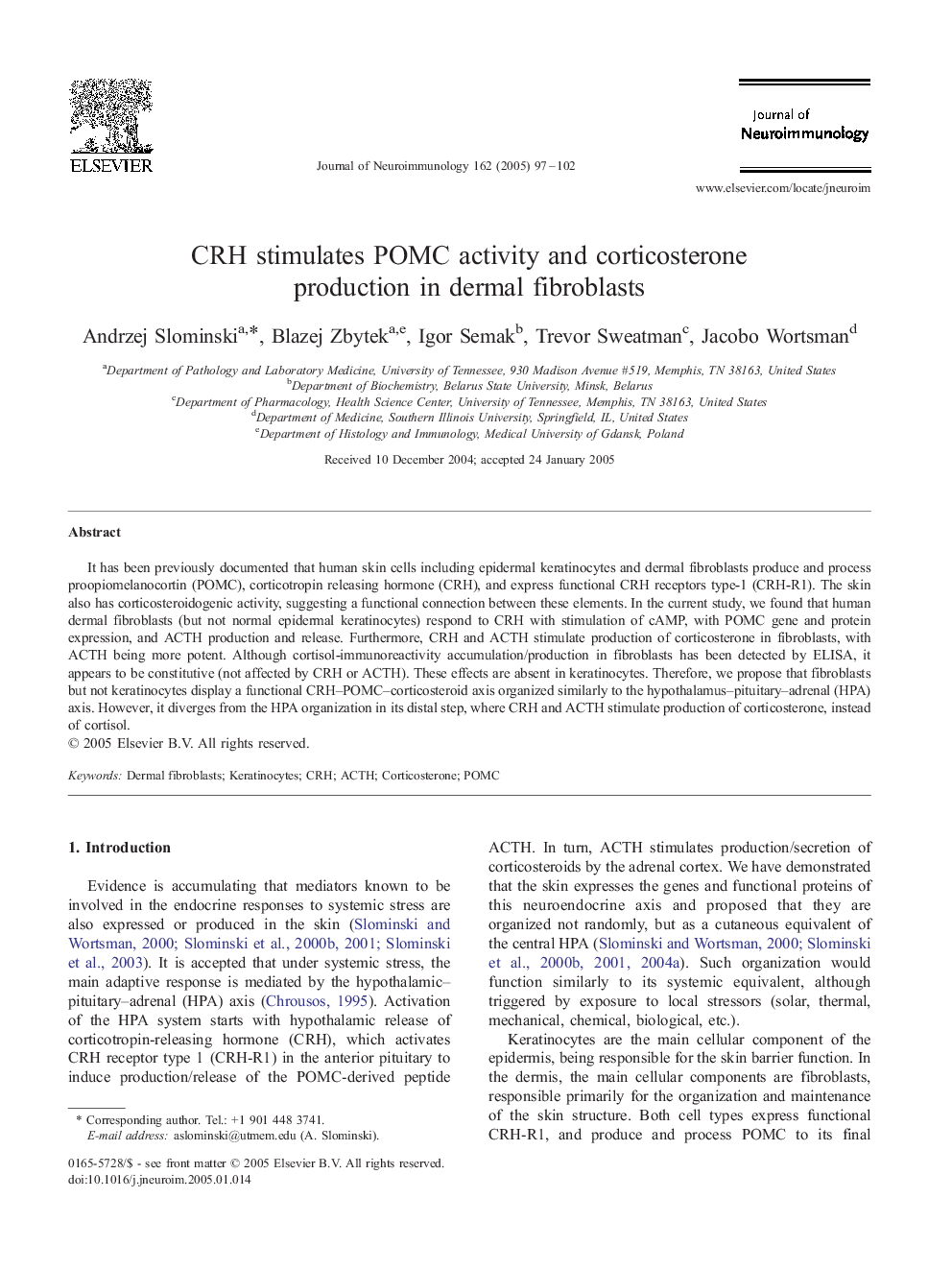| Article ID | Journal | Published Year | Pages | File Type |
|---|---|---|---|---|
| 9194655 | Journal of Neuroimmunology | 2005 | 6 Pages |
Abstract
It has been previously documented that human skin cells including epidermal keratinocytes and dermal fibroblasts produce and process proopiomelanocortin (POMC), corticotropin releasing hormone (CRH), and express functional CRH receptors type-1 (CRH-R1). The skin also has corticosteroidogenic activity, suggesting a functional connection between these elements. In the current study, we found that human dermal fibroblasts (but not normal epidermal keratinocytes) respond to CRH with stimulation of cAMP, with POMC gene and protein expression, and ACTH production and release. Furthermore, CRH and ACTH stimulate production of corticosterone in fibroblasts, with ACTH being more potent. Although cortisol-immunoreactivity accumulation/production in fibroblasts has been detected by ELISA, it appears to be constitutive (not affected by CRH or ACTH). These effects are absent in keratinocytes. Therefore, we propose that fibroblasts but not keratinocytes display a functional CRH-POMC-corticosteroid axis organized similarly to the hypothalamus-pituitary-adrenal (HPA) axis. However, it diverges from the HPA organization in its distal step, where CRH and ACTH stimulate production of corticosterone, instead of cortisol.
Related Topics
Life Sciences
Immunology and Microbiology
Immunology
Authors
Andrzej Slominski, Blazej Zbytek, Igor Semak, Trevor Sweatman, Jacobo Wortsman,
